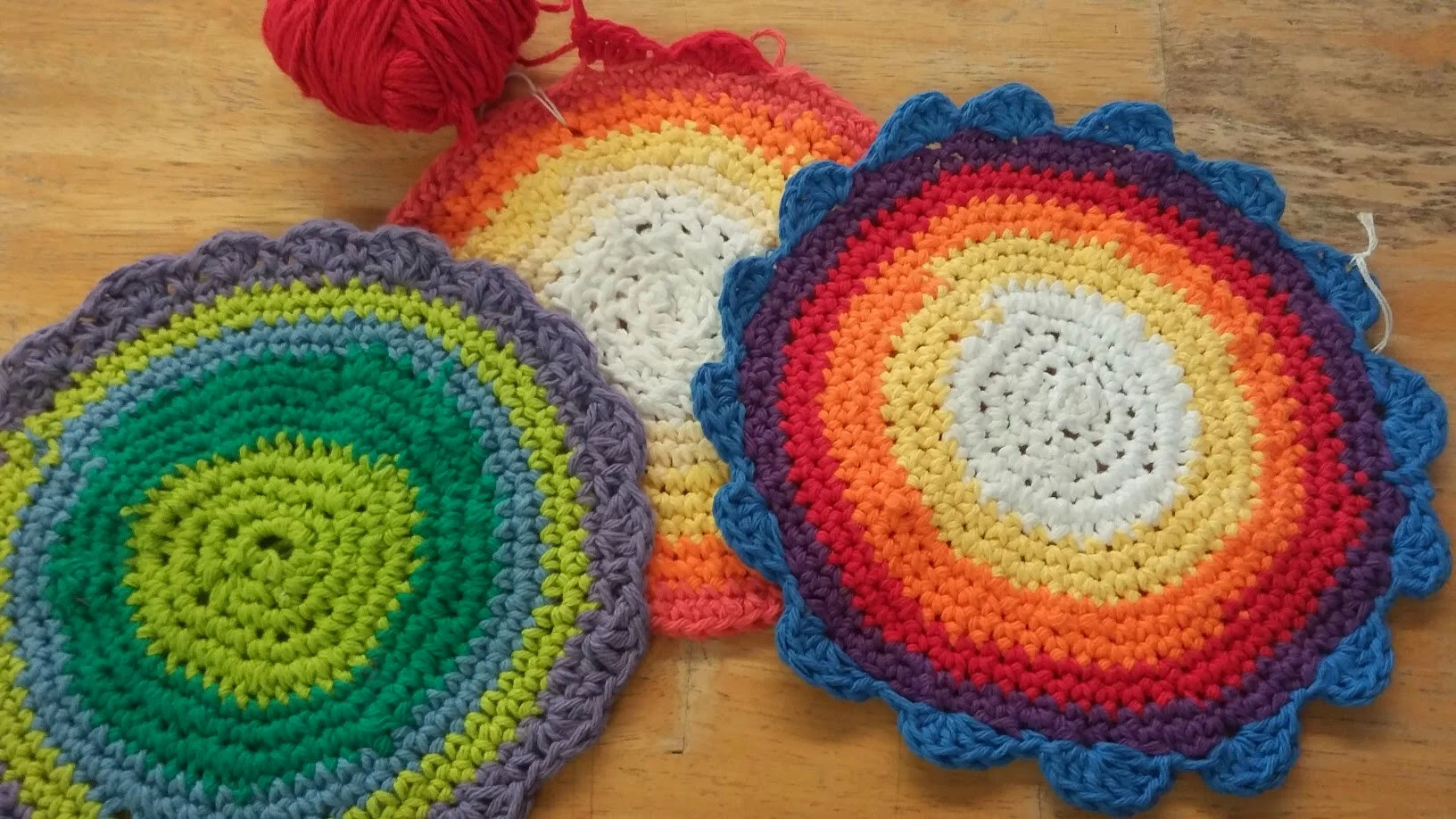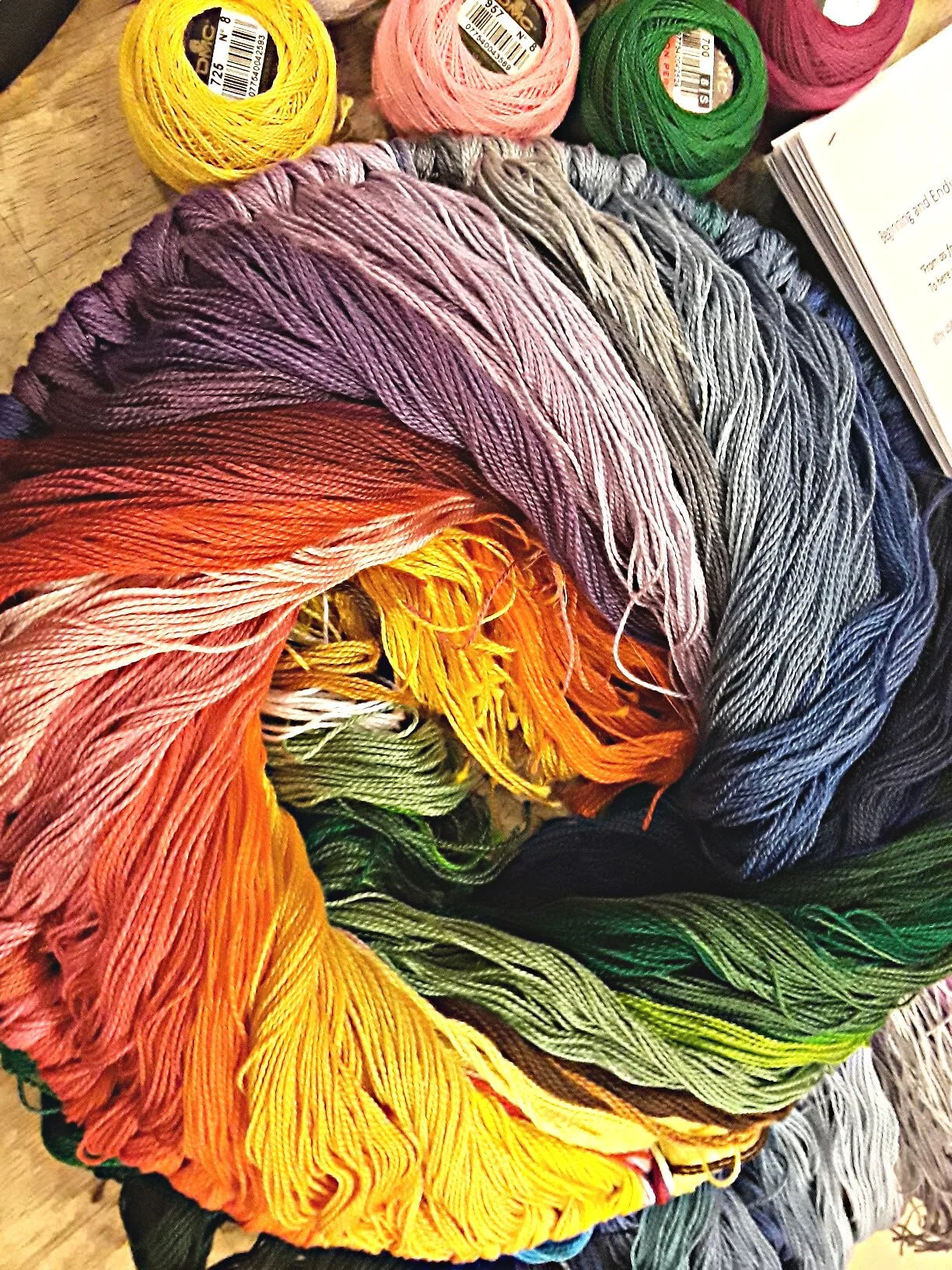The Warp and Weft - Waldorf Handwork Curriculum
We’re excited to share the third and final guest post from author, educator, and all around amazing human, Elizabeth Seward! Elizabeth brings decades of experience, and is sharing her insights into Waldorf handwork.
Like everything in the Waldorf curriculum, handwork cannot be reduced to a checklist.
Knitted dolls from the lower grades Waldorf handwork curriculum.
Every subject in Waldorf education is intricately and carefully woven around the children. It's a ‘seamless garment’ made to support the students where they are. It’s not a list of projects to work through. The array of subjects each child encounters is carefully attuned to the cognitive, emotional, physical, and spiritual growth of each student. Each subject complements every other subject in addressing each individual, like a tightly woven, continuous fabric. Teachers and homeschooling parents are either laying a foundation of skills and understanding, or building on that foundation. That's the wonder and the wisdom of the Waldorf curriculum. Steiner emphasized that each subject affects others, both within the day, the week, and as a whole.
In broad strokes, the handwork curriculum moves from using one thread (1st and 2nd grade knitting and crochet) to making the thread (in 3rd grade spinning), to bringing together plain fabric and a chosen decorative thread in order to put an individual stamp on a practical item such as a napkin or pencil case (monogram and embroidery in 4th grade). Then thinking moves into three dimensions with knitting in the round in 5th grade, and designing and sewing a three dimensional animal in 6th. Doll making takes thinking into the upright human form, and in 7th, clothing sewn by hand is indicated by Steiner, although seldom practiced in 21st century Western countries. 8th grade moves into the Industrial Age in history, and into machine sewing. The High School handwork curriculum recaps and develops these skills, adding another layer of complexity, such as drafting clothing patterns and tailoring in 9th grade, based on machine sewing in 8th grade.
The study of animals weaves into handwork curriculum throughout the grades.
Handwork weaves back and forth through all other subjects. For example, knitting toy animals in first and second grade lays a foundation for fables in Main Lesson in 2nd grade; for the Human and Animal block in 4th grade Main Lesson; the ‘thread’ returns to handwork in 6th grade, designing and sewing a three-dimensional animal and then doll-making in 7th grade, then to the Physiology Main Lesson in High School.
The fine finger movement of holding a sewing needle, learned correctly in first grade, supports finger dexterity in learning to play musical instruments, trains the students for embroidery in 4th, and fine handsewing in 7th grade, while also preparing them for exact geometric drawing in 5th and 6th, and using clay and stone sculpting tools in the High School. The practice of carefully observing and analyzing knitted and crochet stiches is a forerunner for pattern recognition, fundamental to math skills, especially to geometry.
“The physiological value of skillful hand movements is well-documented in regards to building brain capacity. Handwork through the grades is continuously supporting ongoing refinement of these uniquely human skills. ”
The closely interwoven nature of the curriculum means that teachers must work together. I can support and be supported by other teachers if I am aware of the curriculum as a whole, and actively collaborate with colleagues. For example, I used the poem “There were six men of Indostan”, when teaching 6th grade drafting and sewing of animals; my colleague returned to that poem in High School as a philosophical question about differing perceptions and the fallacy of believing we may individually possess the whole truth. In 7th grade sewing, I told the story found in the book “Clara and the Freedom Quilt” which sowed a seed for the history of slavery in the High School.
A simple and crocheted chicken!
Maintaining the integrity of this closely woven fabric demands a lot from teachers who want to bring an authentically enriched curriculum to the students - we must know the principles of human development as outlined by Steiner; we must know the specific indications for our and others’ subjects; we must carefully observe the children in front of us; and we must know our own strengths, sources of inspiration, and limitations. The enormous value of this approach to education is that both students and teachers will recognize the wholeness and integration of everything we learn.
“Children are changing, developing faster, able and eager to move faster with the times. At the same time, hands are less capable. Human beings learn to perceive the world first through movement, then through imagination, picturing what could be, but is not yet manifested. Supporting these stages at appropriate times and in appropriate ways fosters enlivened and flexible thinking in adulthood. ”
A half century ago, children were content to follow along as a ‘mystery’ project unfolded, but now, although children still appreciate knitting little bunnies and toys, many approach learning from another direction. Intelligence is more awake and now it is often more appropriate and valuable to show examples of a finished project or two and work with the children to discover how they could make it. This is especially effective from about 4th grade on.
In many of today’s children, analytic thinking is available sooner, so free-flowing imagination is impacted. I try to balance this by telling stories from the very beginning. In this way, I hope to evoke or awaken an ability to picture something which does not yet exist, and to support the children in bringing this never-before seen knitted hat or sewn elephant or other individual inspiration into physical existence.
Colorful crocheting!
I have found that if I hit the sweet spot of engaging projects, based on Steiner’s curriculum indications, age-appropriate, but also modern enough, then the children are easily interested, and classroom management is much easier. It takes practice, and trial and error!
It is tempting to think about what to add, discard, or substitute that is more relevant to today’s students, but a firm and thorough understanding of the whole curriculum, and the intentions behind it, is required. Otherwise, it’s like snipping a thread on a carefully prepared loom. The whole fabric will suffer.
The longer I teach, the more I appreciate and wonder at the wisdom of this carefully woven and integrated curriculum.
Related Content:
Elizabeth Seward, PhD has been in a Waldorf classroom since 1984 as a parent volunteer, handwork assistant, High School teacher, lead handwork teacher, class teacher, and teacher educator and mentor.
For three years, Elizabeth co-directed the teacher preparation program in Los Angeles (WISC) and opened the San Diego program. She was a member of the Advisory Board and a contributing editor to Living Crafts magazine for six years. Since 2013, she and a colleague have been offering annual “Wonder and Wisdom of Handwork” conferences in retreat settings for teachers, and in recent years, have expanded to include a July conference for homeschoolers.
In 2019, Elizabeth published her first book in a series of three for handwork teachers, classroom teachers and home-schooling parents: Teaching Through Stories: Jane and Jeremy Learn to Knit (forthcoming are “how to spin”, and “how to sew”). Elizabeth earned her doctorate from Claremont Graduate University in the historical and philosophical foundations of education in May 2005. She holds an M.A. in Second Language Learning, and an interdisciplinary M.A. in Spirituality and Education (2018). Her thesis: “Knitting: A Gateway Contemplative Practice.” Elizabeth’s three children attended Waldorf schools in the US and Germany, and her four grandsons are thriving as they begin their Waldorf journey.
She teaches knitting, spinning, and other textile arts to ad hoc community groups, and shares her enthusiasm for Waldorf Education with parents of young children, home-schooling parents and graduate students. For information about her book and more —>
1st Grade Handwork curriculum (online!)
Instagram: @elizabethesewardhandwork
Website: elizabethsewardauthor.co






